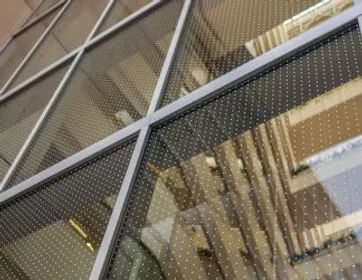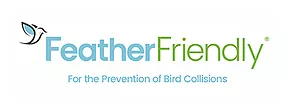Every year an estimated one billion birds die in the United States from colliding with buildings and windows, that’s nearly 3 million every single day (loss et. al 2019)! It is the second leading cause of bird deaths in the United States. Birds cannot see glass, whether it is transparent or mirrored, and need only 6 feet of flight distance from a window to reach a fatal velocity.
Window collisions impact more than just the birds. Properties that experience bird deaths due to window collisions face issues such as:
- Negative public PR as visitors see dead birds on the property
- Reduced employee morale due to regular experiences of collisions and deaths
- Increased building maintenance cost in window cleaning and dead bird clean up
- Bird corpses draw in rats, raccoons, coyotes, and other scavengers to the building looking for an easy meal
- More and more municipalities (including Indianapolis) are introducing ordinances requiring bird friendly buildings
How Do I Know If My Property Contributes to Bird Deaths?
Dead birds near the building is usually the first sign properties notice that indicates a problem. However, by the time birds are regularly found, often employees and regular building visitors are already aware of the issue due to hearing and seeing the birds hit the window. Complaints usually follow and can indicate a more significant issue than the amount of dead birds would suggest.
The number of dead birds found near the building represents only a small fraction of total collisions as many injured or dead birds are removed by scavengers, some birds survive, and some fly far enough away from the building before succumbing to their injuries and go unnoticed. Even if you don’t find any dead birds, if your property has one or more of the following high-risk situations, you likely have unnoticed collisions!
- Transparent glass walkways, skywalks, or stairwells
- Transparent glass bus/smoking shelters
- Transparent glass with nearby indoor plants (real or fake)
- Mirrored glass
- Trees or bushes within 100 feet of windows
- Bird food sources within 100 feet of windows (feeders, berries, crabapple trees, nut trees)
- Bird of prey decals on windows (ineffective and indicates prior knowledge of collisions)
With bird populations declining at an alarming rate (Rosenberg et. al, 2019), it is important that our buildings are a safe environment for our native birds, so that they can continue to provide numerous benefits to our lives through entertainment, insect and rodent control, pollination, economic boosts.

How We Can Help
Migratory Bird Safety Consulting
Wild Goose Chase offers consulting packages to determine your property’s window collision risk and recommend potential solutions. Our staff biologists and window collision experts will visit the property to perform a full habitat assessment, building and window assessment, interviews with key staff, and collision monitoring including species identification. We will determine which facades or features of the property are creating the biggest risk and the find the most cost-effective methods of mitigating your collision issue through landscape modification, window treatments, employee and public education, “Lights Out” programs, and even LEED Bird Collision Deterrence credit certification.

Window Treatment
Wild Goose Chase is a certified and approved dealer and installer of Feather Friendly®, a window treatment designed to reduce or eliminate bird collisions. Working within your budget and specifications, we can customize a treatment solution for your windows and even provide educational signage and decals to promote your bird friendly programs!

